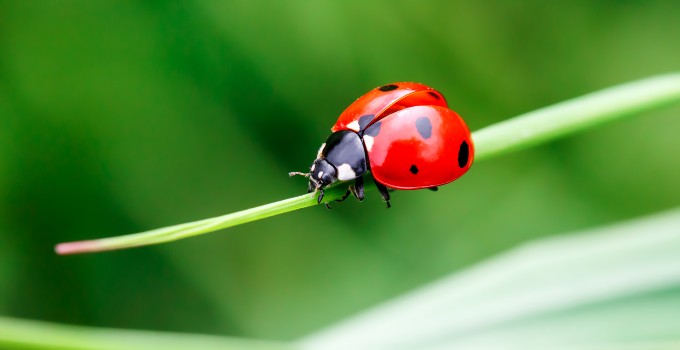Ladybugs are an occasional pest problem for Wilkes-Barre homeowners every fall. Often depicted as cute and harmless critters, these spotted bugs can become a major nuisance if they infest your house or place of business. Are they dangerous? What damage can they do to homes, if any? How did they get here in the first place? If you’re wondering about these questions and what to do about a ladybug infestation in your home, read on for more information.
Why do I have ladybugs in my house?
Ladybugs remain dormant during colder months and become active again in the springtime. They tend to hibernate in large groups, occasionally within wall voids of human made structures. When the temperatures rise, ladybugs begin to leave their hiding spaces to live outdoors.
Ladybugs are particularly attracted to homes with greater sun exposure and are more likely to plague older houses as there are more cracks and crevices for them to sneak through. You are most likely to encounter a ladybug infestation shortly before or after the overwintering process. “Overwintering” is what ladybugs do during late fall and winter. They live in hiding indoors until it’s warm enough to go back outside. Your walls or chimney serve as more of a temporary shelter rather than somewhere to breed and infest year-round. As ladybugs leave in the spring, a lot of people think that there is a ladybug infestation. In reality, they are in the process of leaving.
Are ladybugs dangerous?
Ladybugs are difficult to get rid of once they’ve infested your house. Luckily, ladybugs are more a nuisance than anything else. Even though they have the capability to bite, it’s highly unlikely that it will happen to you. They do not spread disease and are more of a general nuisance that anything else. When ladybugs infest, they are looking for a sheltered place to hide for several months on end, not interact with humans. Unlike mice and ants, your food isn’t all that susceptible to ladybug contamination.
Do ladybugs eat wood?
No, ladybugs do not eat wood. Unlike termites or carpenter ants, ladybugs are not a wood-destroying pest. While you may find them nestled up alongside wood in your home, your furniture and wooden fixtures are safe around ladybugs. Aphids in your garden are the preferred source of food which makes them beneficial to the environment.
Are ladybugs poisonous?
Ladybugs are not poisonous. If you hold or touch a ladybug and it secretes a yellow liquid, it is not poison. It’s a little bit of their blood that gets released when they’re frightened. If you have ladybugs in your house, they are not going to get into your food or attack your children and pets.
Do ladybugs bite?
Ladybugs have the ability to bite, but it’s not common. If you directly handle ladybugs, it’s possible that they will feel threatened and bite. The bite will usually result in localized pain and a small red welt that will subside within a few days. If you find ladybugs in your home, they’re simply trying to find a place to hibernate; they’re not trying to harm you.
While these spotted bugs aren’t dangerous to human health or the structure of homes, they’re still unwelcome visitors. If you have a ladybug infestation in your home, it’s important to get help from a company you can trust.
How can Seitz Bros. prevent ladybugs from getting into my home?
If you deal with ladybugs every year, it’s time to put an end to the invasions. Give us a call or fill out the contact form on this page for an inspection and to discuss treatment options.

